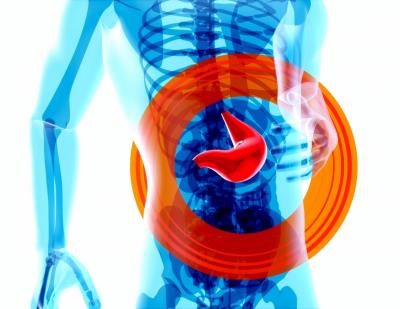
'High Predisposition To Insulin Resistance In Indians Major Driver Of Fatty Liver'
"Studies show that based on a combination of environmental and genetic factors non-alcoholic fatty liver disease (NAFLD) is prevalent among 9-53 per cent of the general population. Currently known as metabolic-associated fatty liver disease (MAFLD), it is a public health problem in India. Obesity, abdominal obesity, diabetes, hypertension, and dyslipidaemia collectively called metabolic syndrome, are the predisposing factors," said Dr Bhaskar Nandi, HoD, Gastroenterology, Amrita Hospital, Faridabad.
"The genetic inclination towards insulin resistance contributes significantly to such prevalence of development of NAFLD among the Indian population," he added.
It is widely prevalent and is a silently progressive disease and has emerged as one of the leading causes of chronic liver disease, cirrhosis, and liver cancer and is a common reason for liver transplants in India.
"NAFLD is asymptomatic till it manifests as cirrhosis in late stages. It is usually diagnosed incidentally on ultrasonography or during evaluation for abnormal liver function tests (LFT). Some patients may experience subtle right upper abdominal discomfort," Dr Nandi said.
"As the disease progresses to cirrhosis, general ill-health, failing health, low appetite, and features of liver decompensation or portal hypertension emerge like ascites (water in the abdomen), jaundice, blood in vomitus, altered sensorium, renal dysfunction, and sepsis," he warned, adding that "advanced forms of NAFLD may lead to liver cancer".
He also said that "metabolic disorders like diabetes, hypertension, dyslipidemia, and obesity also aggravate NAFLD and drive it to cirrhosis. In turn, NAFLD is an adverse marker of outcome in metabolic disease".
Besides prompt treatment, he also recommended lifestyle modification by reducing weight and strict alcohol abstinence to treat NAFLD. He also stressed the need to reduce sugar, deep-fried foods, refined foods, and excessive butter and oil.
"Patients should aim to reduce their weight by at least 10 per cent ideally over a year, through diet and exercise. A hypocaloric Indian diet, which involves smaller portions of home-cooked meals, is recommended," Dr Nandi said.
"Focus on fruits, vegetables, and legumes, while minimising cereals and grains. Regular physical activity, with 4-5 weekly sessions of 40-45 minutes each, combining cardio and resistance training, is strongly advised. Detox diets and protein supplements are not recommended," the doctor said.

Legal Disclaimer:
MENAFN provides the
information “as is” without warranty of any kind. We do not accept
any responsibility or liability for the accuracy, content, images,
videos, licenses, completeness, legality, or reliability of the information
contained in this article. If you have any complaints or copyright
issues related to this article, kindly contact the provider above.
Most popular stories
Market Research

- Fitell Corporation Launches Solana (SOL) Digital Asset Treasury With $100M Financing Facility, With Focus On Yield And On-Chain Defi Innovation
- Mutuum Finance (MUTM) New Crypto Coin Eyes Next Price Increase As Phase 6 Reaches 50% Sold
- Edgen Launches Multi‐Agent Intelligence Upgrade To Unify Crypto And Equity Analysis
- Luminadata Unveils GAAP & SOX-Trained AI Agents Achieving 99.8% Reconciliation Accuracy
- Primexbt Launches Apple Pay For Seamless Deposits On Mobile
- FLOKI Funds Clean Water Wells In Africa Through Partnership With WWFA















Comments
No comment